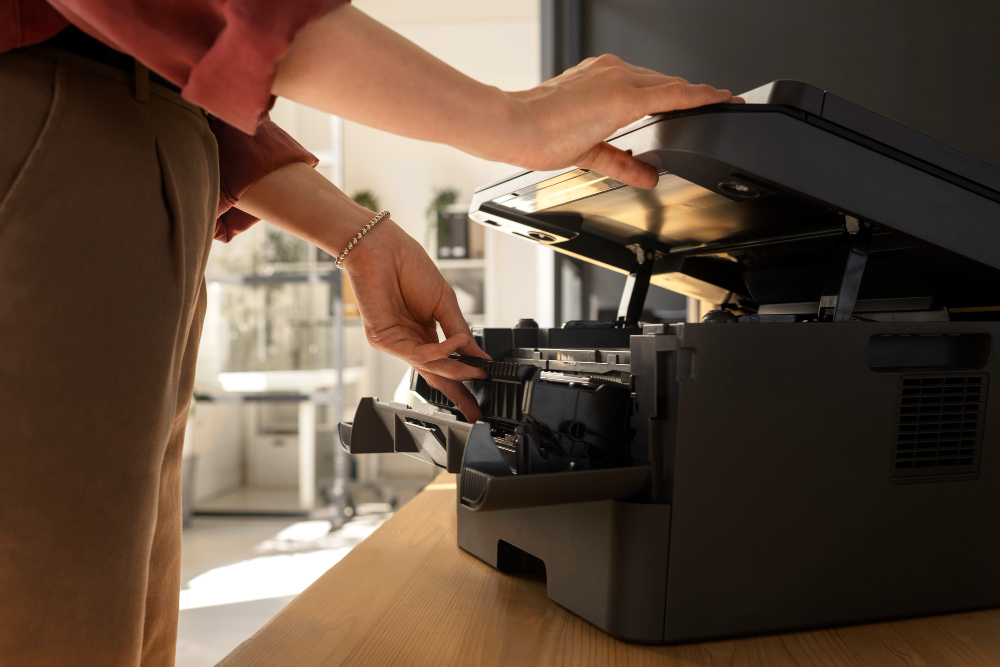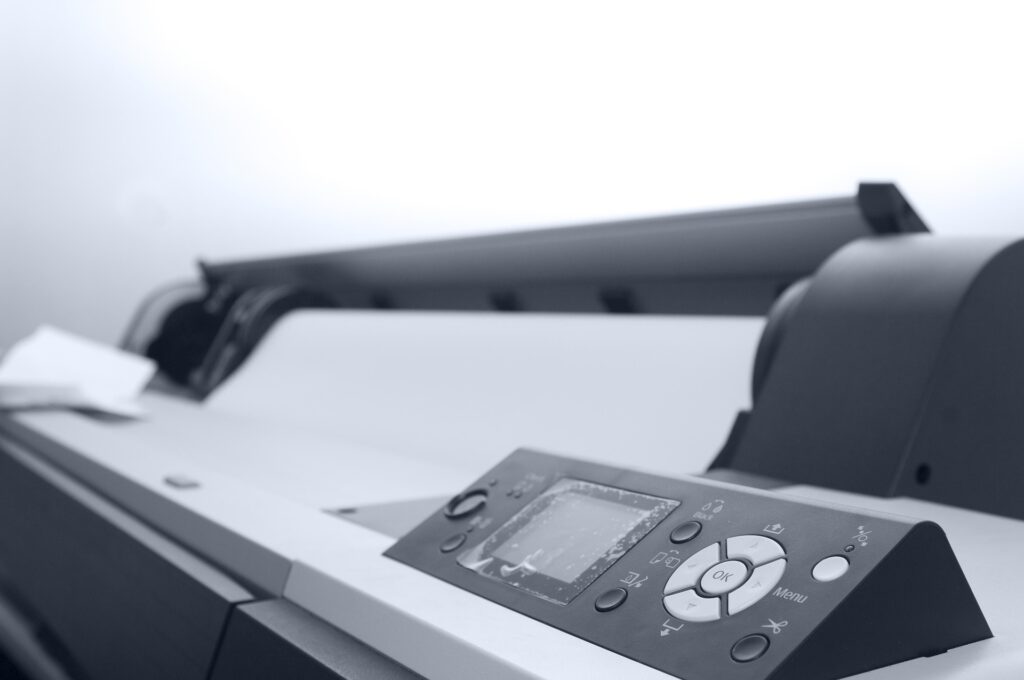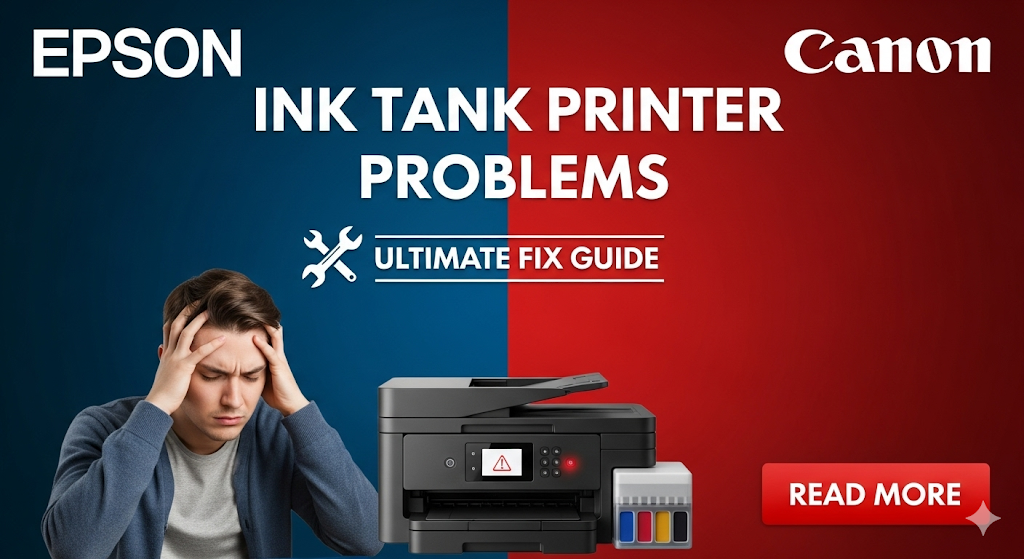Introduction
Ink tank printer problems can turn your cost-effective printing solution into a frustrating nightmare. These printers promise low-cost printing but often develop unique issues that baffle users.
Unlike traditional cartridge printers, tank models use refillable ink reservoirs. This design creates specific problems like air bubbles, ink leaks, and contamination issues that don’t affect other printer types.
Epson EcoTank and Canon MegaTank printers are popular choices for high-volume printing. However, they require different maintenance approaches and troubleshooting methods than standard printers.
This guide covers the most common tank printer issues and their proven solutions. You’ll learn how to prevent problems and fix them quickly when they occur.
What Are Ink Tank Printer Problems?
Ink tank printer problems are specific issues that affect printers with external ink reservoirs instead of sealed cartridges. These problems stem from the unique design of tank-based printing systems.
Tank printers use continuous ink supply systems (CISS) that pump ink from external tanks to print heads. This system creates opportunities for air infiltration, contamination, and mechanical issues.
Common problem categories include:
- Ink flow disruptions and air bubbles
- Print head clogging from dried ink
- Color contamination between tanks
- Physical leaks from tanks or tubes
- Print quality degradation over time
Epson Canon ink tank issues often relate to improper ink handling or maintenance neglect. These printers require more user involvement than traditional cartridge models.
The complexity increases because tank printers have more moving parts and connection points. Each component can fail independently, making diagnosis more challenging.
Understanding these unique characteristics helps you prevent problems and address them effectively when they occur.
8 Essential Fixes for Ink Tank Printer Problems

1. Remove Air Bubbles from Ink Lines
Air bubbles in ink lines cause streaky prints and color inconsistencies. These bubbles interrupt ink flow and create printing gaps.
Run your printer’s automatic air removal cycle through the control panel. This process varies by model but typically takes 5-10 minutes.
For stubborn bubbles, manually prime the system by running multiple cleaning cycles. Some printers require you to press specific button combinations to access deep cleaning modes.
Check ink levels during this process. Low ink levels make air bubble problems worse and prevent effective cleaning.

2. Clean Clogged Print Heads
Print head clogs happen when ink dries inside the tiny nozzles. This creates missing lines, faded colors, or complete color absence.
Start with your printer’s built-in head cleaning function. Access this through printer software or the control panel menu.
For severe clogs, remove print heads if your model allows it. Soak them in distilled water for 10-15 minutes, then dry completely before reinstalling.
Never use tap water or cleaning solutions not approved by your printer manufacturer. These can damage delicate print head components permanently.
3. Fix Ink Contamination Issues
Color contamination occurs when different inks mix inside tanks or lines. This creates muddy colors and incorrect print output.
Identify contaminated tanks by comparing ink colors to fresh bottles. Contaminated ink appears darker or has color shifts.
Drain contaminated tanks completely and rinse with distilled water. Refill only with fresh, compatible ink from sealed bottles.
Run several cleaning cycles to purge contaminated ink from internal lines. This process may waste some fresh ink but ensures color accuracy.
4. Seal Ink Tank Leaks
Physical leaks waste expensive ink and can damage your printer’s internal components. Address leaks immediately to prevent larger problems.
Inspect all tank connections, seals, and fill ports for visible damage. Tighten loose connections carefully without over-tightening.
Replace damaged seals or gaskets using manufacturer-approved parts. Generic replacements may not fit properly or could worsen leak problems.
Clean any spilled ink immediately with lint-free cloths. Dried ink becomes harder to remove and may permanently stain printer components.
5. Resolve Print Quality Degradation
Print quality problems in tank printers often result from ink settling, contamination, or system maintenance neglect.
Perform regular print head alignment through your printer software. This ensures colors register properly and text appears sharp.
Check ink quality by examining bottles for separation, clumping, or unusual odors. Old or poor-quality ink causes multiple printing problems.
Print test pages weekly if you use your printer infrequently. This prevents ink from drying in print heads during idle periods.
6. Address Ink Flow Interruptions
Inconsistent ink flow creates banding, streaking, and incomplete prints. These issues often relate to air infiltration or system blockages.
Verify all tank caps are properly sealed and undamaged. Loose caps allow air entry that disrupts ink flow consistency.
Check for kinks or damage in ink supply tubes. Replace damaged tubes with manufacturer-approved replacements only.
Monitor ink consumption patterns for sudden changes. Dramatic increases may indicate leaks or system inefficiencies.
7. Fix Color Recognition Errors
Some tank printers fail to recognize ink levels or colors correctly. This prevents normal printing and may trigger false error messages.
Reset ink level sensors through your printer’s maintenance menu. The exact procedure varies by manufacturer and model.
Ensure you’re using correct ink types for your specific printer model. Wrong formulations can confuse sensors and damage print heads.
Update printer firmware if available. Manufacturers often release updates that improve ink recognition and sensor accuracy.

8. Solve Paper Feed Problems
Tank printer troubleshooting often reveals that paper feed issues compound ink-related problems. Poor paper feeding can cause smearing and waste ink.
Clean paper rollers with slightly damp, lint-free cloths. Ink residue on rollers can cause paper jams and feeding problems.
Adjust paper guides to match your paper size exactly. Loose guides allow paper movement that affects print registration.
Use appropriate paper types for your print jobs. Heavy papers may require specific settings to prevent feeding problems.
Professional Maintenance Tools and Tips
Regular maintenance prevents most tank printer problems before they become serious issues. Establish a consistent maintenance schedule based on your usage patterns.
Keep maintenance supplies on hand including distilled water, lint-free cloths, and approved cleaning solutions. Having these ready enables quick problem resolution.
Document your maintenance activities and any problems encountered. This information helps identify patterns and prevents recurring issues.
Consider using printer management software if available for your model. These programs can automate some maintenance tasks and alert you to potential problems.
Professional cleaning kits designed for your specific printer model often work better than generic solutions. The investment pays off in reduced problems and better print quality.
Common Mistakes in Tank Printer Troubleshooting
Using Wrong Ink Types
The biggest mistake users make is using incompatible or low-quality ink in their tank printers. These inks can clog print heads, damage internal components, and void warranties.
Always use manufacturer-recommended inks or high-quality compatibles specifically designed for your model. Generic inks may seem cost-effective but often create expensive problems.
Check ink expiration dates before use. Expired ink may have changed consistency or developed contaminants that harm your printer.
Overfilling Ink Tanks
Overfilled tanks can cause spills, pressure problems, and sensor errors. Most tanks have maximum fill lines that should never be exceeded.
Fill tanks slowly and stop when ink reaches the maximum line. Overfilling doesn’t provide more printing capacity and often creates problems.
Use proper filling techniques with steady hands and good lighting. Spilled ink during filling can contaminate other colors or damage printer electronics.
Ignoring Regular Maintenance
Tank printers require more frequent maintenance than cartridge models. Skipping maintenance leads to cumulative problems that become expensive to fix.
Create a maintenance schedule based on your printing volume. Heavy users need weekly maintenance while light users can maintain monthly.
Don’t wait for problems to appear before performing maintenance. Preventive care costs less than repairs and reduces downtime.
Forcing Mechanical Components
When tank printer fixes don’t work immediately, users sometimes force components or over-tighten connections. This approach usually makes problems worse.
If a solution doesn’t work gently, stop and reconsider the problem. Forced repairs often damage components that were previously functional.
Consult manufacturer documentation before attempting any mechanical adjustments. These guides provide proper procedures and torque specifications.
FAQs
Q: How often should I clean my ink tank printer? A: Clean print heads monthly for regular users, weekly for heavy users. Perform deep cleaning quarterly or when you notice print quality issues.
Q: Can I use third-party inks in my Epson or Canon tank printer? A: High-quality compatible inks designed for your specific model are usually safe. Avoid generic inks that don’t specify compatibility with your printer.
Q: Why do my tank printer colors look muddy or incorrect? A: This usually indicates ink contamination between tanks or expired ink. Check for cross-contamination and replace old or contaminated ink supplies.
Q: How do I know if my tank printer problem requires professional service? A: Seek professional help if basic troubleshooting fails, you see physical damage, or error messages persist after following manufacturer instructions.
Conclusion
Ink tank printer problems require specific knowledge and techniques that differ from traditional printer troubleshooting. Understanding these unique challenges helps you maintain reliable, cost-effective printing.
Regular maintenance prevents most serious issues and extends your printer’s lifespan significantly. The time invested in proper care pays dividends in reduced problems and consistent print quality.
Remember that tank printers offer significant cost advantages when properly maintained. Don’t let minor issues discourage you from enjoying the benefits of low-cost, high-volume printing.
Keep manufacturer documentation handy and follow recommended procedures for all maintenance and repairs. This approach minimizes risks and ensures the best possible outcomes.
When problems persist despite your best efforts, professional service may be more cost-effective than continued troubleshooting. Know when to seek expert help to protect your investment.
With proper care and prompt attention to issues, your ink tank printer can provide years of reliable, economical service for all your printing needs.
Printer Only Prints Half Page: Ultimate Fix Guide for Cut-Off Documents Read More.




